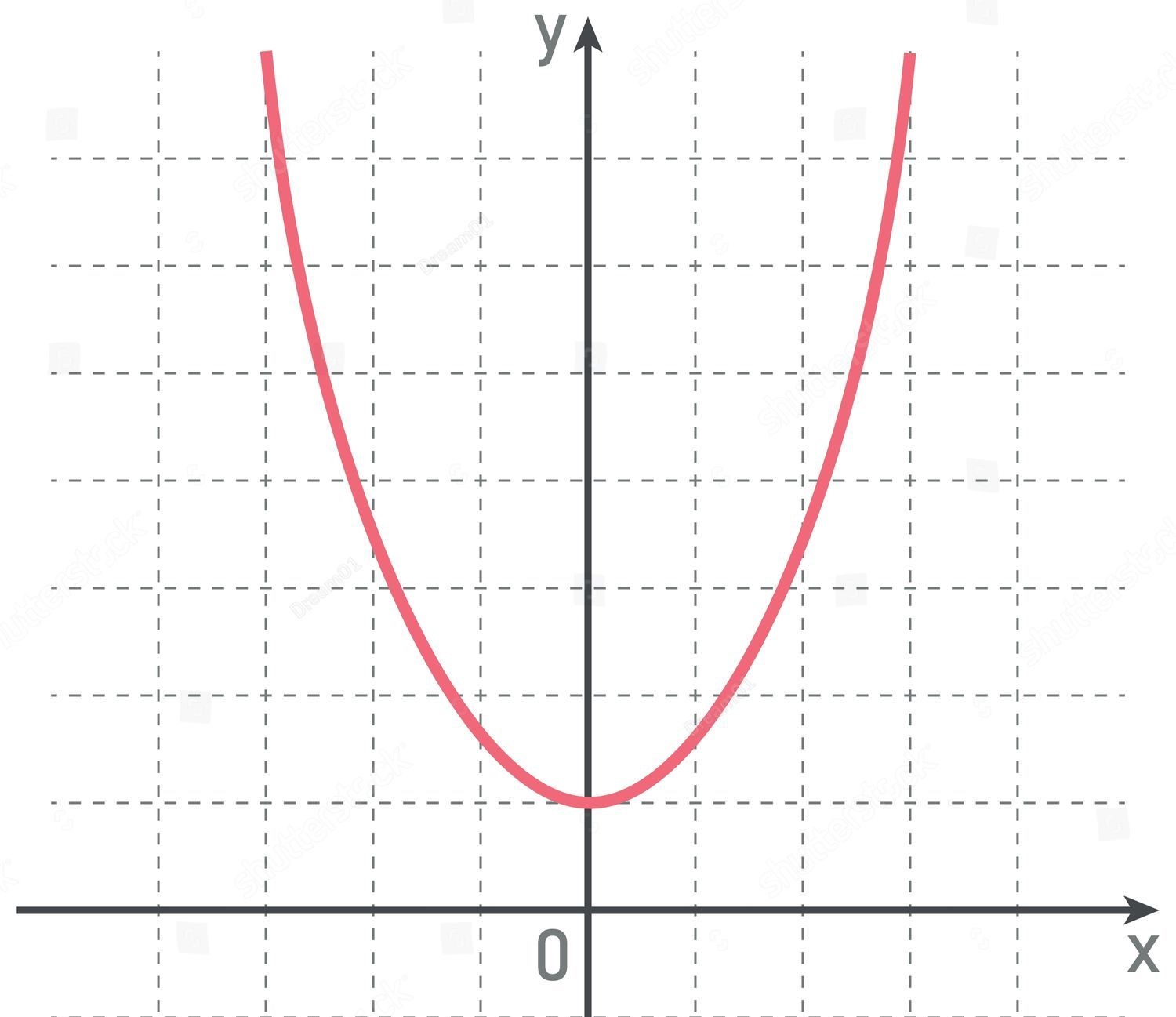Home>Health and Wellness>How To Determine If You Have A Wrist Sprain Or Break


Health and Wellness
How To Determine If You Have A Wrist Sprain Or Break
Published: February 26, 2024
Learn how to differentiate between a wrist sprain and a break for better health and wellness. Understand the symptoms and treatment options to get the right care.
(Many of the links in this article redirect to a specific reviewed product. Your purchase of these products through affiliate links helps to generate commission for Regretless.com, at no extra cost. Learn more)
Table of Contents
Introduction
Wrist injuries are common occurrences that can significantly impact daily activities and overall well-being. Whether it's a sudden fall, a sports-related mishap, or an unexpected twist, the wrist is vulnerable to sprains and breaks. Distinguishing between the two is crucial for receiving appropriate care and facilitating the healing process.
Understanding the nuances of wrist injuries, including their signs, symptoms, and treatment options, empowers individuals to make informed decisions about their health. This article aims to shed light on the key differences between a wrist sprain and a break, providing valuable insights into recognizing the specific indicators of each condition.
By delving into the distinct characteristics of wrist sprains and breaks, readers will gain a deeper understanding of the potential severity of their injury and the necessary steps to take for proper diagnosis and treatment. Let's explore the intricacies of wrist injuries and equip ourselves with the knowledge needed to navigate these challenges effectively.
Read more: How To Break A Hex
Understanding Wrist Injuries
Wrist injuries encompass a broad spectrum of conditions that affect the complex network of bones, ligaments, tendons, and muscles in the wrist joint. These injuries often result from sudden impacts, excessive force, or unnatural movements, leading to varying degrees of damage. Understanding the underlying mechanisms of wrist injuries is crucial for differentiating between a sprain and a break.
The wrist is a remarkable assembly of eight carpal bones, connecting the forearm to the hand. This intricate structure provides flexibility and support, enabling a wide range of movements essential for daily activities. However, this flexibility also renders the wrist susceptible to injuries, particularly during high-impact activities or accidents.
Wrist sprains typically occur when the ligaments, which are tough bands of tissue connecting the bones, are stretched beyond their normal range. This can happen during a fall, sudden twist, or impact, causing the ligaments to become overstretched or torn. On the other hand, a wrist break involves a fracture in one or more of the bones comprising the wrist joint. This can result from a direct blow, a forceful impact, or a significant trauma to the wrist.
Understanding the distinction between a sprain and a break is essential for accurate diagnosis and appropriate treatment. While both injuries can cause pain, swelling, and limited mobility, the severity and specific symptoms differ significantly. By recognizing the unique characteristics of each injury, individuals can make informed decisions about seeking medical attention and pursuing the most effective course of action for recovery.
In essence, comprehending the intricacies of wrist injuries empowers individuals to navigate the challenges associated with these conditions. By gaining insight into the underlying anatomy and the potential mechanisms of injury, individuals can better grasp the implications of their symptoms and take proactive steps toward proper diagnosis and treatment.
Signs and Symptoms of a Wrist Sprain
A wrist sprain can manifest with a range of distinctive signs and symptoms, often signaling the extent of the injury and guiding the appropriate course of action. Understanding these indicators is crucial for promptly addressing the injury and facilitating the healing process.
-
Pain and Tenderness: Following a wrist sprain, individuals commonly experience pain and tenderness around the wrist joint. This discomfort may intensify with movement or pressure on the affected area, indicating potential ligament damage.
-
Swelling: Swelling in the wrist area is a typical response to a sprain. The body's natural inflammatory process leads to the accumulation of fluid, causing visible swelling and a sensation of fullness or tightness in the wrist.
-
Bruising: In some cases, a wrist sprain can lead to bruising around the affected area. The presence of discoloration, ranging from mild to pronounced, may indicate internal bleeding due to the injury.
-
Limited Range of Motion: A sprained wrist often results in restricted movement and diminished flexibility. Individuals may find it challenging to perform routine activities that involve wrist mobility, such as grasping objects or twisting the hand.
-
Instability: Instability in the wrist joint, characterized by a feeling of looseness or weakness, can be a prominent symptom of a sprain. This instability may be accompanied by a sense of the wrist "giving way" during movement.
-
Warmth and Redness: The affected wrist may exhibit warmth and redness, indicative of the body's inflammatory response to the injury. These visual cues, coupled with heightened temperature, signify the ongoing healing process and the body's efforts to repair the damaged tissues.
-
Popping Sensation: Some individuals may experience a popping or snapping sensation at the time of injury, signaling the stretching or tearing of the ligaments. This sensation, often accompanied by immediate pain, can serve as a notable indicator of a sprain.
Recognizing these signs and symptoms is pivotal for promptly addressing a wrist sprain and initiating appropriate measures for recovery. By remaining attentive to these indicators and seeking timely medical evaluation, individuals can effectively manage a wrist sprain and minimize the potential for long-term complications.
Signs and Symptoms of a Wrist Break
A wrist break, also known as a wrist fracture, presents distinct signs and symptoms that differentiate it from a sprain. Understanding these indicators is crucial for promptly identifying the severity of the injury and seeking appropriate medical attention. Unlike a sprain, which involves damage to the ligaments, a wrist break entails a fracture in one or more of the bones comprising the wrist joint.
-
Intense Pain: A wrist break often causes severe and immediate pain, particularly following a traumatic event such as a fall or impact. The intensity of the pain may not diminish with rest or over-the-counter pain medication, indicating potential bone damage.
-
Swelling and Tenderness: Similar to a sprain, a wrist break can lead to swelling and tenderness around the affected area. However, in the case of a break, the swelling may be more pronounced, accompanied by visible deformity or misalignment of the wrist.
-
Bruising: Individuals with a wrist break may experience significant bruising, extending beyond the immediate area of the injury. The presence of extensive bruising, often with discoloration spreading to the hand or fingers, suggests internal bleeding and tissue damage associated with a fracture.
-
Limited Mobility: A wrist break can result in a noticeable limitation of wrist mobility, often accompanied by an inability to bear weight on the affected hand. Individuals may find it challenging to move the wrist or grasp objects, indicating potential bone displacement or misalignment.
-
Visible Deformity: In cases of severe wrist breaks, a visible deformity or abnormal positioning of the wrist may be apparent. This can manifest as an irregular bulge or indentation, signaling a significant displacement or fracture of the wrist bones.
-
Numbness or Tingling: Numbness or tingling sensations in the hand or fingers, particularly following a wrist injury, can indicate nerve involvement associated with a break. These sensations may persist and extend beyond the immediate aftermath of the injury.
-
Audible Sound: In some instances, a wrist break may be accompanied by an audible sound or sensation at the time of injury, such as a snap or crack. This can signify a significant force applied to the wrist, resulting in bone fracture.
Recognizing these signs and symptoms is crucial for promptly addressing a potential wrist break and seeking immediate medical evaluation. By remaining vigilant and responsive to these indicators, individuals can facilitate timely diagnosis and appropriate treatment, minimizing the risk of complications and supporting effective recovery.
Seeking Medical Attention
Seeking prompt medical attention is paramount when faced with a wrist injury, as timely evaluation and diagnosis are essential for determining the appropriate course of treatment. Whether experiencing symptoms indicative of a sprain or a potential break, individuals should prioritize seeking professional medical assessment to ensure comprehensive care and optimal recovery.
Upon sustaining a wrist injury, it is crucial to seek immediate medical attention if any of the following signs and symptoms are present:
- Intense or persistent pain that does not subside with rest or over-the-counter pain medication.
- Significant swelling, bruising, or visible deformity in the wrist area.
- Limited mobility, instability, or an inability to bear weight on the affected hand.
- Numbness, tingling, or altered sensation in the hand or fingers following the injury.
- Audible sound or sensation at the time of injury, such as a snap or crack, accompanied by severe pain.
When seeking medical attention, individuals can consult a healthcare professional, such as an orthopedic specialist or an urgent care provider, for a thorough evaluation. The healthcare provider will conduct a comprehensive assessment, which may include physical examination, imaging studies such as X-rays or MRI scans, and a detailed review of the injury history and associated symptoms.
Based on the evaluation findings, the healthcare provider will determine the nature and severity of the wrist injury, differentiating between a sprain and a potential break. This assessment is crucial for guiding the appropriate treatment plan, which may involve immobilization, pain management, and, if necessary, surgical intervention for a confirmed break.
In cases of a suspected wrist break, immediate medical attention is imperative to prevent further damage and facilitate proper alignment and healing of the affected bones. Delaying treatment for a potential break can lead to complications such as improper bone healing, chronic pain, and long-term functional impairment.
By prioritizing timely medical evaluation and intervention, individuals can ensure that their wrist injury is accurately diagnosed and effectively managed, promoting a smoother recovery process and reducing the risk of long-term complications. Seeking medical attention promptly empowers individuals to receive the specialized care needed to address their specific injury, whether it is a sprain or a break, and embark on a path toward healing and rehabilitation.
Read more: How To Crack Your Wrist
Treatment Options
Upon receiving a comprehensive evaluation and diagnosis of a wrist injury, individuals can explore various treatment options tailored to address the specific nature of their condition. The chosen treatment approach aims to alleviate pain, promote healing, and restore optimal function to the wrist. The selection of treatment modalities is guided by the severity of the injury, whether it is a sprain or a break, and the individual's overall health and lifestyle considerations.
Wrist Sprain Treatment
For individuals diagnosed with a wrist sprain, the primary focus of treatment is to reduce pain and inflammation while facilitating the healing of the overstretched or torn ligaments. Common treatment options for wrist sprains include:
-
Rest and Immobilization: Immobilizing the wrist through the use of a splint or brace helps prevent further strain on the injured ligaments, allowing them to heal effectively. Resting the wrist and avoiding activities that exacerbate pain or discomfort is essential during the initial phase of recovery.
-
Ice Therapy: Applying ice to the affected wrist helps reduce swelling and alleviate pain. Cold therapy can be administered several times a day for short durations to manage inflammation and promote comfort.
-
Compression and Elevation: Wrapping the wrist with a compression bandage provides support and helps control swelling. Elevating the wrist above heart level when resting can further aid in reducing swelling and promoting circulation.
-
Physical Therapy: Engaging in targeted exercises and rehabilitation under the guidance of a physical therapist can enhance wrist strength, flexibility, and stability. Physical therapy plays a crucial role in restoring optimal function and preventing recurrent sprains.
-
Pain Management: Over-the-counter pain relievers or anti-inflammatory medications may be recommended to manage discomfort and facilitate the recovery process. However, it is important to follow healthcare provider's guidance regarding medication usage.
Wrist Break Treatment
In cases of a confirmed wrist break, the treatment approach may involve more specialized interventions to address the bone fracture and support proper healing. Treatment options for wrist breaks may include:
-
Immobilization and Support: Stabilizing the wrist with a cast or splint is essential for maintaining proper alignment of the fractured bones and preventing further injury. Immobilization allows the bones to heal without displacement.
-
Surgical Intervention: Severe wrist breaks or fractures that involve significant displacement or instability may require surgical intervention. Orthopedic procedures such as internal fixation with screws, plates, or pins may be performed to realign the bones and promote optimal healing.
-
Pain Management: Managing pain associated with a wrist break is crucial for patient comfort and overall well-being. Healthcare providers may prescribe pain medications to alleviate discomfort during the healing process.
-
Rehabilitation and Physical Therapy: Following the initial phase of healing, rehabilitation and physical therapy play a vital role in restoring wrist function, strength, and range of motion. These interventions support the gradual return to normal activities and reduce the risk of long-term complications.
By considering these treatment options and collaborating closely with healthcare providers, individuals can embark on a tailored approach to address their wrist injury effectively. The chosen treatment plan aims to optimize recovery, minimize the risk of complications, and support the individual's journey toward regaining full wrist functionality and mobility.
Recovery and Rehabilitation
Recovery and rehabilitation play pivotal roles in the journey toward restoring optimal function and mobility following a wrist injury. Whether recuperating from a sprain or a break, the process of rehabilitation encompasses targeted interventions aimed at strengthening the wrist, improving flexibility, and promoting overall recovery.
Read more: How To Determine Whose Line It Is Anyway
Wrist Sprain Recovery
In the case of a wrist sprain, the initial phase of recovery focuses on allowing the overstretched or torn ligaments to heal effectively. As the acute symptoms subside, individuals can gradually transition into rehabilitation to restore wrist function and prevent recurrent sprains. Physical therapy plays a central role in this phase, with tailored exercises designed to enhance wrist strength, stability, and range of motion. These exercises may include wrist flexion and extension movements, grip strengthening exercises, and proprioceptive training to improve joint awareness and coordination.
Furthermore, incorporating activities that promote wrist flexibility and dexterity, such as gentle stretching exercises and range of motion drills, can aid in preventing stiffness and promoting optimal healing. The guidance of a skilled physical therapist is invaluable during this phase, as they can customize rehabilitation programs to address individual needs and facilitate a gradual return to normal activities.
Wrist Break Rehabilitation
Rehabilitation following a wrist break involves a multifaceted approach aimed at supporting the healing of the fractured bones and restoring wrist functionality. Upon the removal of a cast or splint, individuals may engage in targeted exercises to rebuild wrist strength and flexibility. These exercises are carefully tailored to accommodate the healing process, gradually progressing from gentle movements to more challenging activities as the wrist gains stability.
Incorporating weight-bearing exercises, grip strengthening drills, and proprioception training can aid in reestablishing optimal wrist function and reducing the risk of long-term complications. Additionally, individuals may benefit from activities that promote overall upper extremity strength and coordination, contributing to a comprehensive rehabilitation outcome.
Throughout the recovery and rehabilitation process, individuals are encouraged to adhere to the guidance of their healthcare providers and physical therapists, maintaining open communication regarding their progress and any challenges encountered. Consistent participation in rehabilitation activities, coupled with a proactive approach to self-care and injury management, can significantly contribute to a successful recovery from a wrist injury.
By embracing the principles of gradual progression, consistent effort, and patience, individuals can navigate the recovery and rehabilitation journey with resilience and determination. The ultimate goal is to regain full wrist functionality, minimize the risk of recurrent injuries, and resume daily activities with confidence and comfort.
In essence, the recovery and rehabilitation phase represents a crucial stage in the healing process, empowering individuals to reclaim optimal wrist function and embark on a path toward long-term wellness and mobility.
Conclusion
In conclusion, distinguishing between a wrist sprain and a break is essential for individuals who have experienced a wrist injury. Understanding the unique signs, symptoms, and treatment approaches associated with each condition empowers individuals to make informed decisions about seeking medical attention and pursuing the most effective course of action for recovery.
The signs and symptoms of a wrist sprain, including pain, swelling, limited range of motion, and instability, provide valuable indicators of ligament damage. On the other hand, the distinct characteristics of a wrist break, such as intense pain, visible deformity, and limited mobility, signify potential bone fracture and necessitate immediate medical evaluation.
Seeking prompt medical attention following a wrist injury is crucial for accurate diagnosis and appropriate treatment. Whether consulting a healthcare professional for a suspected sprain or a potential break, individuals can ensure comprehensive care and optimal recovery by prioritizing timely evaluation and intervention.
Treatment options for wrist sprains and breaks encompass a range of modalities, including rest, immobilization, physical therapy, and, in severe cases, surgical intervention. Tailoring the treatment approach to the specific nature of the injury supports effective healing and facilitates the restoration of optimal wrist function.
Furthermore, the recovery and rehabilitation phase following a wrist injury plays a pivotal role in restoring strength, flexibility, and mobility. Engaging in targeted exercises, adhering to rehabilitation programs, and maintaining open communication with healthcare providers are essential components of the recovery journey.
By embracing the insights provided in this article, individuals can navigate the complexities of wrist injuries with confidence and resilience. Armed with a deeper understanding of the nuances between a sprain and a break, individuals can take proactive steps toward their recovery, minimize the risk of long-term complications, and regain full wrist functionality.
Ultimately, the knowledge gained from recognizing the signs and symptoms of wrist sprains and breaks empowers individuals to prioritize their health and well-being, ensuring that they receive the specialized care needed to address their specific injury. This comprehensive approach fosters a smoother recovery process and sets the stage for a return to daily activities with renewed strength and vitality.













